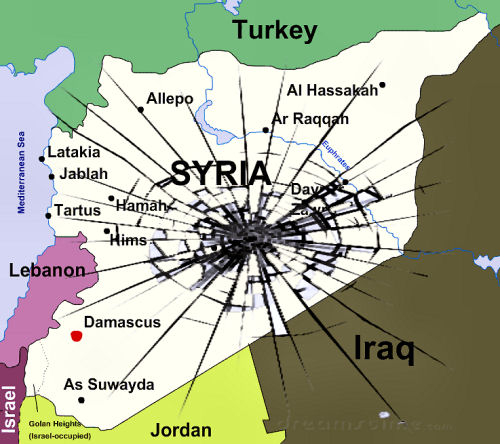 A recent article speculating that the U.S. and Russia may be trying to form five new states in the Middle-East relies on some inaccurate assumptions that could be quite dangerous if they were really to become the basis for policy:
A recent article speculating that the U.S. and Russia may be trying to form five new states in the Middle-East relies on some inaccurate assumptions that could be quite dangerous if they were really to become the basis for policy:

1) "Sunni Syria" as a separate entity from "Baathist/Allawite Syria." Most of the Syrian Arab Army that has been fighting foreign-backed rebels in Syria for 4 years are in fact Sunni Arabs. Despite immense bounties (by Syrian standards) offered to officers and soldiers to defect, there have been few takers. While about 70% of the population may be Sunni Arabs, 55% of Syrians told a Qatari-funded YouGov poll in December 2011 that they did not want President Assad to resign, even as the U.S. and its allies were launching a proxy war with that objective. So dividing the country on this kind of quasi-sectarian basis could be as dangerous and destabilizing as it has been in Iraq.
2) "The US doesn't trust anyone but the Kurds." The U.S. only trusts some of the Kurds: the KDP and PUK (barely) in Iraq, not the PKK in Turkey nor the newly autonomous Rojava in Syria. It is unlikely that the Kurds the U.S. "trusts" could dominate the others, and a U.S.-backed effort to establish them as the dominant party in a Kurdish state could lead to yet another bloody and intractable conflict - one reason it has not been tried by previous U.S. interventionists!
3) "Sunni Iraq and Shi'a Iraq". The demonstrations taking place in many parts of government-controlled Iraq are directed at the sectarianism as well as the corruption of the Abadi government. The sectarian division of Iraq was the result not of long-standing divisions in Iraqi society but of U.S. divide-and-rule policy. The conversion of a majority of Iraqis to Shiism took place in the 19th century, not earlier, as formerly nomadic tribes settled down to an agricultural way of life in newly fertile areas around the Shiite shrines of Najaf and Karbala, after the completion of the Hindiyya Canal in 1803. In the 20th century, urbanization brought millions of Shiites to Baghdad and other cities, but many tribes had members of both sects and intermarriage of Kurds, Sunni Arabs and Shiites was common. After the 1958 revolution, many urban Iraqis became atheists and many grew up without ever knowing which sect their parents or grandparents had belonged to. After the US invasion, a survey by Oxford Research International in February 2004 found that only 14% of Iraqis preferred sectarian politicians and parties to secular ones. While the U.S. policy of sectarian and ethnic division has to some extent been self-fulfilling, it would be a travesty to formally divide the country on that basis without giving the people of Iraq a real choice in the matter.
In Iraq and Syria, imposing policies based on self-serving, simplistic, foreign projections of these complex societies is as dangerous as it has ever been. The goal must be negotiated ceasefires followed by political transitions through which the people of Iraq and Syria can determine their own future.
About the author
Nicolas J S Davies is the author of Blood On Our Hands: the American Invasion and Destruction of Iraq. He also wrote the chapter on “Obama at War” in Grading the 44th President: a Report Card on Barack Obama’s First Term as a Progressive Leader. He is also the author of this 2012 article about the crisis in Syria : http://www.alternet.org/world/armed-rebels-and-middle-eastern-power-plays-how-us-helping-kill-peace-syria

Add comment